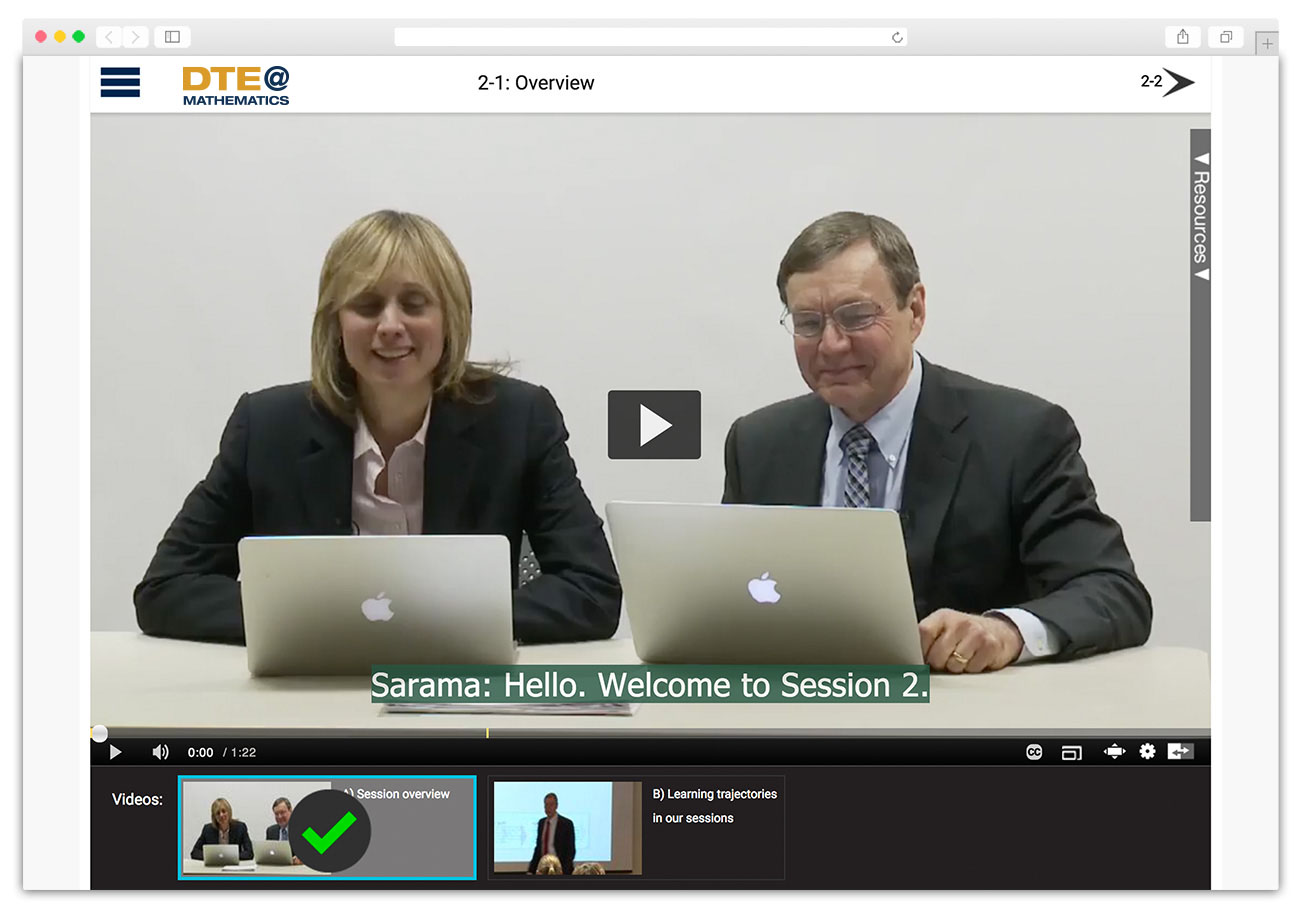Geometric-measurement - Session 2: Length Learning Trajectory – Developmental progression
Part 1: Overview
Overview
Session 1 launched work on length measurement by focusing on exploring length measurement, analyzing how length measurement is represented in standards for student learning, naming key concepts of measurement, and observing how these concepts show up in students’ early ideas about measurement.
Session 2 extends the work from Session 1. This session focuses on
- Unpacking learning trajectories for length by watching students measure
- Taking notes to support learning and note taking in teaching
- Applying learning trajectories to work with students on the Broken Ruler Task
Key Points
Learning trajectories have three components:
- the goal (e.g., the key concepts involved with measuring length)
- the developmental progression (i.e., levels of thinking through which the typical child passes when learning these ideas), and
- instruction (i.e., the ways teachers can support students’ learning of these ideas). The scientific approach to learning trajectories weaves together ideas and practices drawn from standards, curriculum, teaching, and assessment.
Session 1 focused on the “goal” of the learning trajectory for length; this session focuses on the developmental progression.
